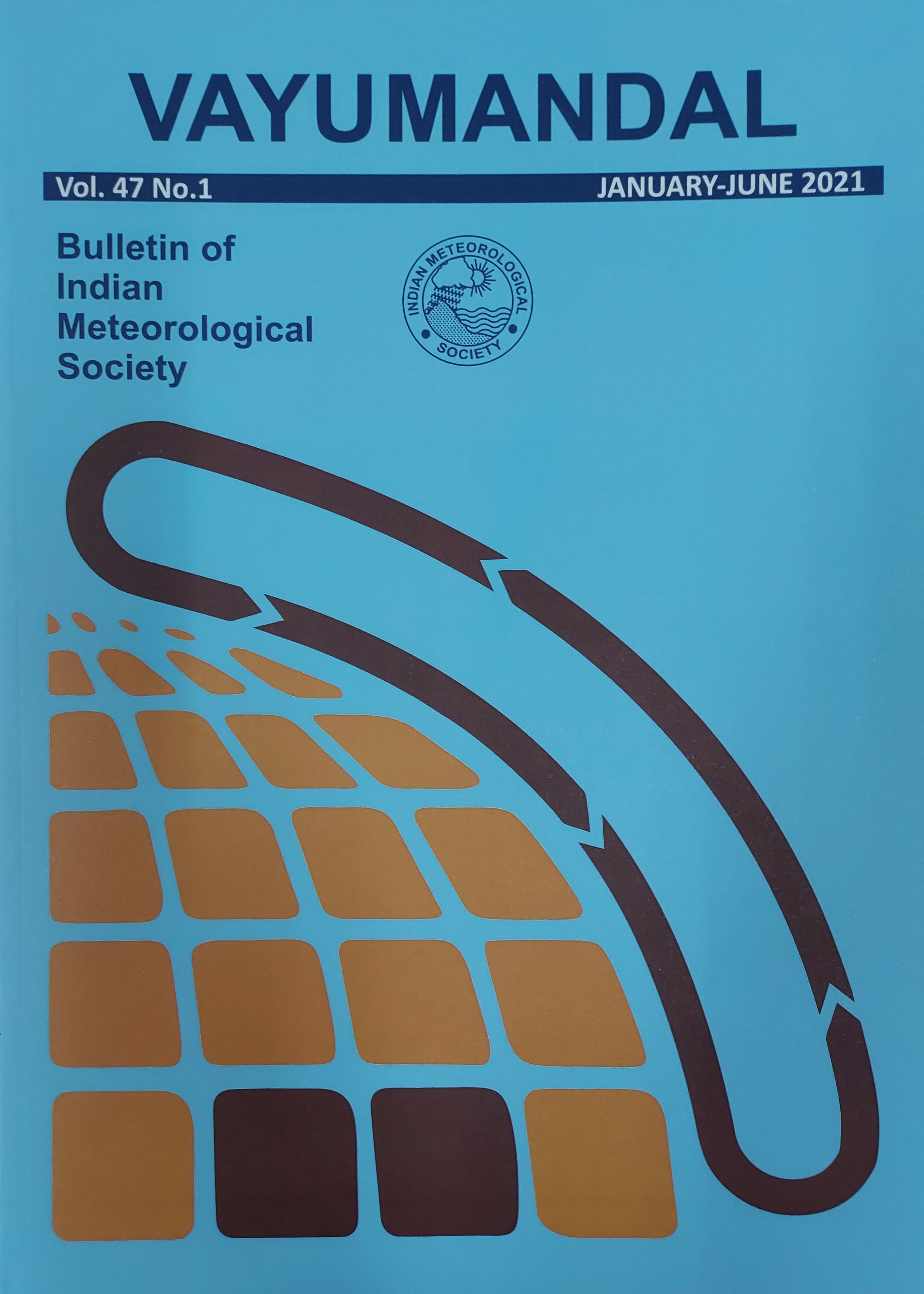Occurrence of Winter Thunderstorm and Squall followed by Immediate Dense Fog at IGI airport —Monitoring and Forecasting Challenges
Abstract
Unique incident of Thunderstorm (TS)/squall immediately followed by dense fog occurred on 7-8th February, 2011 reducing the visibility to almost zero which severely affected the flight movement at Indira Gandhi International (IGI) airport New Delhi. The immediate formation of dense fog which was of radiation type and further during night/morning time could never be foreseen by forecaster even at nowcast time scale of 1-6 hours in advance. In the present study, data from the surface, upper air, satellite, DWR and airport meteorological instruments located at the ends of the three runways(RWY) have been critically analysed to detect and monitor the intensification and movement of both the events to find out their use in nowcasting. Study of upper air parameters shows the atmosphere was highly unstable by 1200UTC before the occurrence of TS with CAPE value reaching up to 548 J/Kg. The lapse rate 60C/Km while at 0000UTC when dense fog was at the peak the upper air pattern changed to stable atmosphere where the reversed lapse rate was observed. This study shows that use of DWR, satellite and the Integrated Aviation Weather Observing System (IAW0S) at IGI airport has an advantage over synoptic and NWP inputs for accurate nowcast of severe TS/ Squall to severe fog spell over the station reducing the ground visibility to zero.
Copyright (c) 2024 Vayumandal

This work is licensed under a Creative Commons Attribution-NonCommercial 4.0 International License.
All articles published by VAYUMANDAL are licensed under the Creative Commons Attribution 4.0 International License. This permits anyone.
Anyone is free:
- To Share - to copy, distribute and transmit the work
- To Remix - to adapt the work.
Under the following conditions:
- Share - copy and redistribute the material in any medium or format
- Adapt - remix, transform, and build upon the material for any purpose, even
commercially.


